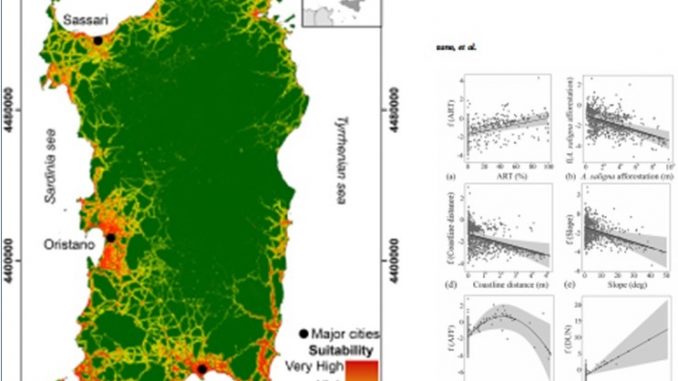
Modelling Acacia saligna invasion in a large Mediterranean island using PAB factors: A tool for implementing the European legislation on invasive species. The present study aimed to investigate the role of propagule pressure (P), abiotic (A), and biotic (B) factors (collectively indicated as PAB) on the suitability of the Mediterranean island of Sardinia (Italy) to be invaded by the tree Acacia saligna, recently included in the list of invasive alien species of European Union concern.
To this aim, a binomial Generalized Linear Model was applied for disentangling the relationship between A. saligna occurrence records and 10 thematic layers, at high-resolution (10 x10 m), used as proxies for the 3 categories of PAB variables. The 432 occurrence records of A. saligna were periodically monitored (period 2000–2018) to check the persistence of the populations and their invasive status. The predictive power of the model was evaluated by computing the mean of the AUC scores, through cross-fold validation. The model adequately described how the PAB factors influence the presence of A. saligna which is mainly shaped by abiotic factors such as topography, and biotic factors such as the presence of woody dune vegetation, and to a lesser extent by other predictors. The projection of the model to the whole island clearly shows that suitability varies at
the landscape level due to the variation of the PAB across the territory. The probability of A. saligna occurrence near the coast is higher in sand dunes. In the internal areas of the island it occurs close to the roads and urban areas. This study and the tested methodology could represent a suitable tool to prioritize areas for the monitoring of A. saligna to meet the requirements of the Regulation (EU) No. 1143/2014 on Invasive Alien Species (the IAS Regulation).
https://www.sciencedirect.com/science/article/pii/S1470160X20304532

Commenta per primo